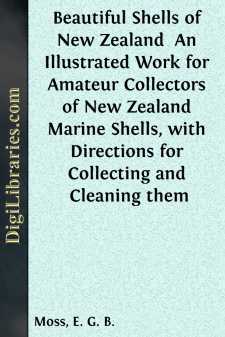Categories
- Antiques & Collectibles 13
- Architecture 36
- Art 48
- Bibles 22
- Biography & Autobiography 813
- Body, Mind & Spirit 142
- Business & Economics 28
- Children's Books 17
- Children's Fiction 14
- Computers 4
- Cooking 94
- Crafts & Hobbies 4
- Drama 346
- Education 46
- Family & Relationships 57
- Fiction 11829
- Games 19
- Gardening 17
- Health & Fitness 34
- History 1377
- House & Home 1
- Humor 147
- Juvenile Fiction 1873
- Juvenile Nonfiction 202
- Language Arts & Disciplines 88
- Law 16
- Literary Collections 686
- Literary Criticism 179
- Mathematics 13
- Medical 41
- Music 40
- Nature 179
- Non-Classifiable 1768
- Performing Arts 7
- Periodicals 1453
- Philosophy 64
- Photography 2
- Poetry 896
- Political Science 203
- Psychology 42
- Reference 154
- Religion 513
- Science 126
- Self-Help 84
- Social Science 81
- Sports & Recreation 34
- Study Aids 3
- Technology & Engineering 59
- Transportation 23
- Travel 463
- True Crime 29
Beautiful Shells of New Zealand An Illustrated Work for Amateur Collectors of New Zealand Marine Shells, with Directions for Collecting and Cleaning them
by: E. G. B. Moss
Description:
Excerpt
CHAPTER I.
SHELLS AND THEIR INMATES.
Before the study of shellfish, or molluscs, was conducted on the scientific principles of the present day, shells were classified as univalves, bivalves, and multivalves. The univalves were shells in one piece, such as the whelk; the bivalves those in two pieces, such as the mussel or oyster; and the multivalves those in more than two pieces, such as barnacles or chitons, barnacles, however, being no longer classed with shells.
The highest of the five types, or natural divisions, of animals are the Vertebrata, the Mollusca, and the Annulosa. The vertebrates usually have vertebrae, or jointed backbones, and from this the highest division takes its name; but the real test is the colour of the blood, which in the vertebrates is always red.
The molluscs have soft bodies and no internal skeleton, but in lieu of this the animal is usually protected by an external shell, harder than the bones of vertebrates. The annulosa, like the molluscs, have soft bodies and no internal skeletons; but the external shell is divided into joints or segments, and is usually softer than the bones of vertebrates.
Fishes belong to the vertebrate division, oysters to the mollusc, and crabs and starfish to the annulosa.
The remaining two of the five divisions are the Caelenterata, in which the general cavity of the body communicates freely with that of the digestive apparatus, and the Protozoa, which includes all animals, such as sponges, etc., not included in the above four divisions.
The shell of an oyster takes the place of the bones of a dog; and although it may seem strange for an animal to have its bones on the outside of its body, it is really no more strange than for a fruit, such as the strawberry or raspberry, to have its seeds on the outside. Lime is the principal ingredient of all bones; and the bones of vertebrate animals contain a large proportion of phosphate of lime, while the shells of molluscs, or shellfish (as they are popularly called), consist almost entirely of carbonate of lime.
When scientists began more carefully to examine the structure of shellfish, they found that those similarly constructed had shells with certain marked peculiarities. The days of conchology were then doomed; and the study of the mollusc, or malacology, took its place.
Besides those necessary for digesting food, most shellfish have organs equivalent to those of vertebrate animals, such as feet, arms, eyes, head, heart, and tongue. Although bearing the same names, these organs rarely have a similar shape to those of the vertebrates, being necessarily adapted to the different mode of living. The foot of a cockle, shaped like an animal's tongue, enables it to move slowly from place to place, as well as to burrow in a sandy beach with the comical jerks so well known to observers. The tongues are beautifully designed for their work. The long, narrow tongue of the vegetarian mollusc works like a scythe, and mows down the delicate marine grasses on which the animal feeds....


